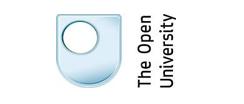- View more resources from this publisher
 Open University
Open University
The Search for Fundamental Particles
This Open University text was designed as a unit for undergraduate level physics courses. Unit 32 was part of the S102 course, which was last presented in 1989. Although high energy particle physics has advanced since this time, with larger particle accelerators such as the Large Hadron Collider, the information contained within this unit is still correct and complete up to A level standard.
This resource would make a good primer for teachers who are teaching A level particle physics. The text is interspersed with questions, the answers for which are at the end of the unit. This text can be used to support The Particle Physics Project, from the Institute of Physics.
Unit sections:
*Observing Particles: Particle collisions; units of energy of mass; accelerators and detectors
*Leptons: The four leptons and their antiparticles, and their interactions
*Hadrons: Properties of hadrons; charge, baryon number, strangeness and their conservation
*Quarks: Up, down and strange quarks and their antiparticles and interactions
*Lepton-quark symmetry: The discovery of charm
*Gauge bosons: Types of gauge boson, photons, gluons and the graviton
*Particle Physics in Perspective: A summary of the fundamental particles and links to the evolution of the universe.
Show health and safety information
Please be aware that resources have been published on the website in the form that they were originally supplied. This means that procedures reflect general practice and standards applicable at the time resources were produced and cannot be assumed to be acceptable today. Website users are fully responsible for ensuring that any activity, including practical work, which they carry out is in accordance with current regulations related to health and safety and that an appropriate risk assessment has been carried out.




